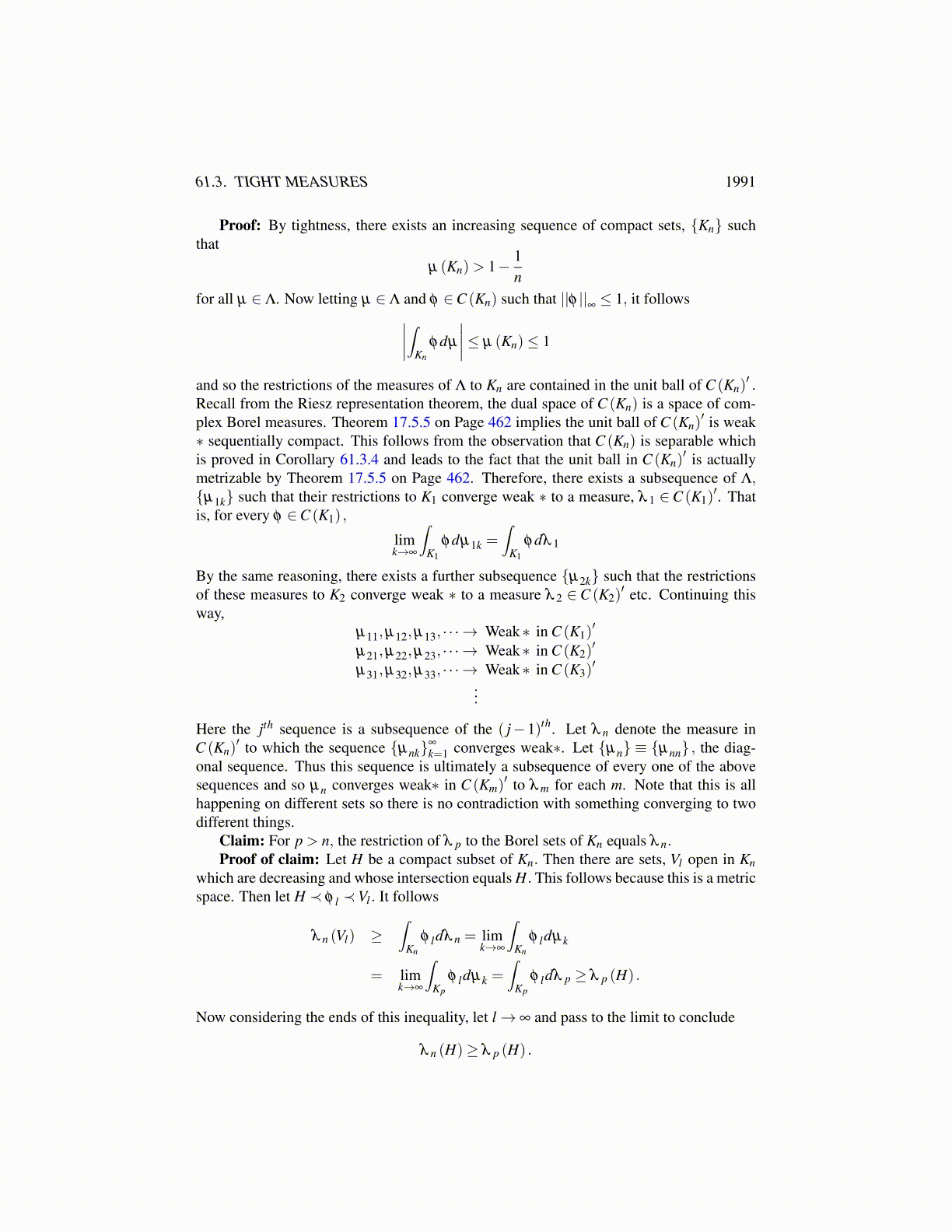
61.3. TIGHT MEASURES 1991
Lemma 61.3.2 Let E be a separable complete metric space and let Λ be a set of Borelprobability measures. Then Λ is tight if and only if for every ε > 0 and r > 0 there exists afinite collection of balls, {B(ai,r)}m
i=1 such that
µ
(∪m
i=1B(ai,r))> 1− ε
for every µ ∈ Λ.
Proof: If Λ is tight, then there exists a compact set, Kε such that
µ (Kε)> 1− ε
for all µ ∈ Λ. Then consider the open cover, {B(x,r) : x ∈ Kε} . Finitely many of thesecover Kε and this yields the above condition.
Now suppose the above condition and let
Cn ≡ ∪mni=1B(an
i ,1/n)
satisfy µ (Cn) > 1− ε/2n for all µ ∈ Λ. Then let Kε ≡ ∩∞n=1Cn. This set Kε is a compact
set because it is a closed subset of a complete metric space and is therefore complete, andit is also totally bounded by construction. For µ ∈ Λ,
µ(KC
ε
)= µ
(∪nCC
n)≤∑
nµ(CC
n)< ∑
n
ε
2n = ε
Therefore, Λ is tight.Prokhorov’s theorem is an important result which also involves tightness. In order to
give a proof of this important theorem, it is necessary to consider some simple results fromtopology which are interesting for their own sake.
Theorem 61.3.3 Let H be a compact metric space. Then there exists a compact subset of[0,1] ,K and a continuous function, θ which maps K onto H.
Proof: Without loss of generality, it can be assumed H is an infinite set since otherwisethe conclusion is trivial. You could pick finitely many points of [0,1] for K.
Since H is compact, it is totally bounded. Therefore, there exists a 1 net for H {hi}m1i=1 .
Letting H1i ≡ B(hi,1), it follows H1
i is also a compact metric space and so there exists a 1/2
net for each H1i ,{
hij
}mi
j=1. Then taking the intersection of B
(hi
j,12
)with H1
i to obtain sets
denoted by H2j and continuing this way, one can obtain compact subsets of H,
{H i
k
}which
satisfies: each H ij is contained in some H i−1
k , each H ij is compact with diameter less than
i−1, each H ij is the union of sets of the form H i+1
k which are contained in it. Denoting by{H i
j
}mi
j=1those sets corresponding to a superscript of i, it can also be assumed mi < mi+1.
If this is not so, simply add in another point to the i−1 net. Now let{
Iij
}mi
j=1be disjoint
closed intervals in [0,1] each of length no longer than 2−mi which have the property that